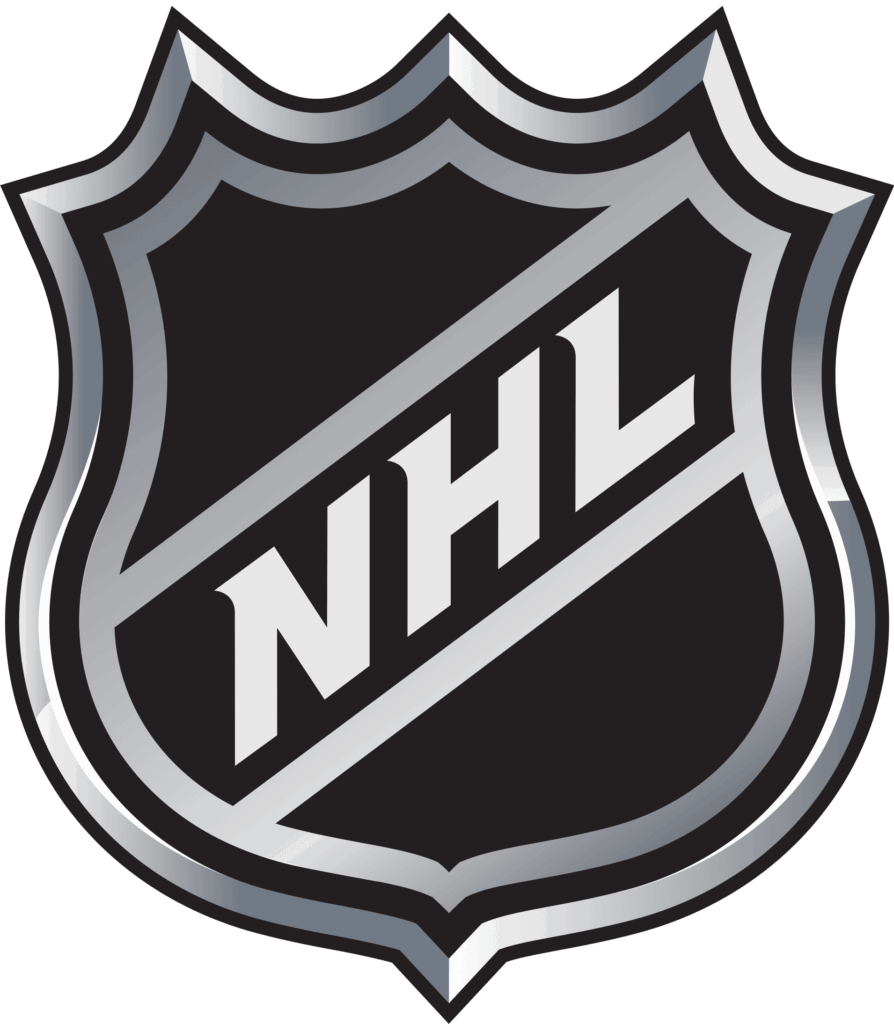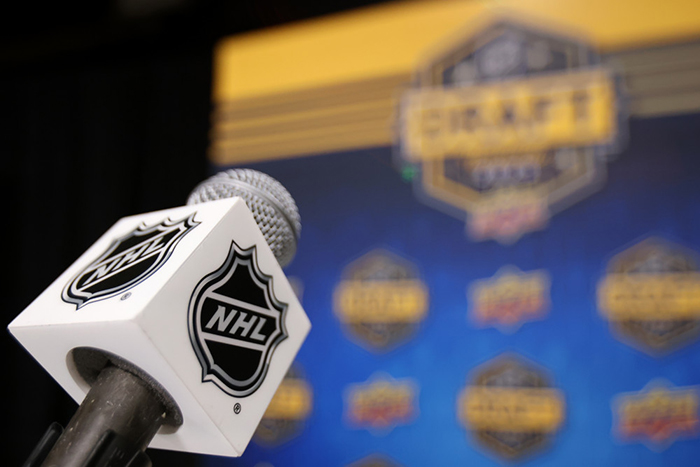The Chicago Blackhawks return to the United Center on Saturday for their second game of the week. They host the Toronto Maple Leafs in another Original Six clash. Chicago enters the game on a strong 3-0-1 run and will look to push their point streak to five. Toronto arrives in full crisis mode—8-8-2 on the season, winless in their last four (0-3-1), and playing without their captain Auston Matthews. Expectations are high in Toronto, and frustration is growing.
But the real story of this Blackhawks team isn’t in the headlines. It’s in the numbers.
Here are 13 stats that show exactly who the Blackhawks are right now—the progress, the problems, and the reasons why this team is trending upward.
1. Blackhawks vs Maple Leafs: Last 10 Games
Chicago is 5-4-1 in their last 10 meetings with the Leafs, but Toronto won both games last season with a combined +6 goal differential. Chicago wants to flip that tonight.
2. Record vs Playoff Teams
Against 2025 playoff teams, Chicago is 3-4-2 this season. Inside the Atlantic Division, they’re 3-2-1. Competitive numbers for a young roster.
3. Outshot in 12 of 17 Games
The Hawks have been outshot in 12 of their 17 games:
– When Chicago outshoots opponents: 2-2-1
– When opponents outshoot Chicago: 6-3-3
They’re winning games even when they don’t lead in shots — something that didn’t happen last year.
4. Year-to-Year Improvement
After 17 games last year:
6-10-1 (13 points), GF 42, GA 52, differential -10
After 17 games this year:
8-5-4 (20 points), GF 56, GA 45, differential +11
That’s a 21-goal swing in the right direction.
5. The Power Play Matters
Chicago has gone six games without a power-play goal this season — and they’re 1-4-1 in those games.
When the opponent goes 0-for-the-power-play? Chicago is 7-1-1. The Blackhawks rank sixth in the League in power-play percentage (26.0), including at least one power-play goal in 11 of their 17 games (7-1-3 in those games).
Special teams decide their games.
6.Tight Game Pressure
In one-goal games, the Hawks are 2-2-4.
In overtime: 1-3
In shootouts: 0-1
Finishing games is the next big step for this young team.
7.Scoring First = Winning Hockey
When Chicago scores the first goal: 8-2-2
When they allow the first goal: 0-3-2
They’ve never won a game when they didn’t score first. That’s the reality of a young group.
Leading After Two Periods
When the Blackhawks lead after two periods: 5-0-0
When they trail after two: 0-3-1
They protect leads well, but comebacks are still rare.
8.Period-by-Period Breakdown
The Blackhawks have been outshot in every period this season. When you total all first, second, and third periods, opponents have 118 more shots overall.
Goal differential by period:
– 1st period: +7
– 2nd period: –7
– 3rd period: +14
They struggle in the middle frame but dominate when it matters late.
9. The Bedard Effect
Bedard has gone pointless in only four games, and the Hawks are still 2-1-1 in those.
He’s scored in 8 of 17 games (4-2-2 in those).
He has 10 games with 3+ shots and 9 power-play points.
He has 13 primary assists and 3 secondary assists
Bedard, who’s having a full-fledged breakout in his third NHL season, is thriving in various advanced stats. His speed is the most notable improvement compared to last season; he already has five 22-plus mile per hour speed bursts (94th percentile among forwards) after having none last season.
He also ranks in the 90th percentile or higher among forwards in the following EDGE categories:
• 20-plus mph speed bursts: 60 (97th percentile)
• Total skating distance: 59.65 miles (seventh among forwards; 99th percentile)
• Even-strength skating distance: 51.51 miles (fourth among forwards; 99th percentile)
• Average shot speed: 63.27 mph (95th percentile)
• Midrange shots on goal: 28 (tied for third; 99th percentile)
• Midrange goals: 5 (tied for seventh; 99th percentile)
He drives the offense every night.
10. Bertuzzi: High-Danger Machine
Tyler Bertuzzi leads the NHL with nine high-danger goals, and all nine have come from inside the scoring areas.
He has:
– 5 power-play goals
– 36 shots (2nd on the team)
Last year he ranked in the 97th percentile in high-danger goals. This year, he’s picking up right where he left off.
Chicago ranks tied for second in high-danger goals as a team (34; behind Toronto Maple Leafs at 35) after it was 27th in that category last season (105). Andre Burakovsky, who is also playing on Bedard’s line, and Frank Nazar, who also has seen power play time with Bedard prior to his recent injury, also rank highly in high-danger goals (four each; 87th percentile among forwards).
11. NHL Edge
The Blackhawks still spend too much time defending:
– 31st in defensive-zone time (43.2%)
– 31st in offensive-zone time (39.1%)
– 29th in shot-quality zone maps for all locations — high-danger and mid-range
Knight’s save percentages by location
Among goalies to play at least 10 games this season, Knight ranks highly in both midrange save percentage (.929; fourth) and high-danger save percentage (.888; second) despite facing the third-most high-danger shots on goal (116). Knight is tied with Ilya Sorokin of the New York Islanders for the most high-danger saves (103 each) and also leads the NHL in 5-on-5 save percentage in close situations (.968), meaning when games are tied in the first or second period or within one goal in the third period.
Chicago simply doesn’t have the puck enough. They compete hard, but too many shifts start and finish in their own end.
12. Levshunov Power-Play Impact
Since Artyom Levshunov joined the top PP unit, Chicago’s power play is up to 5th in the NHL (26.0%).
Individually:
– 3rd among NHL defensemen in assists per 60 (2.15)
– 13th among defensemen in points per 60 (2.15)
He’s not elite yet, but his improvement is clear and his impact keeps growing every game.
13. 7 Defensemen Effect
The Blackhawks have dressed seven defensemen in a League-most 15 games this season, and are 8-3-4 in those games. Four of those defensemen rank highly at the position in a key NHL EDGE stat:
• Artyom Levshunov’s offensive zone start percentage: 48 (98th percentile)
• Louis Crevier’s average shot speed: 77.19 mph (98th percentile)
• Sam Rinzel’s average skating distance per 60 minutes: 8.99 miles (91st percentile)
• Alex Vlasic’s max skating speed: 22.23 mph (85th percentile)
Final Thoughts
These 13 numbers tell the real story. The Blackhawks are improving, playing harder, scoring more, defending better, and getting meaningful production from young players like Bedard, Levshunov, Knight, and Bertuzzi. The rebuild is pushing forward, and the results are showing on the ice.
But it’s also worth noting that Chicago still gives up a lot. They’re tied for the second-most shots allowed per game (31.8) and sit near the bottom of the league in 5-on-5 shot attempts percentage (46.2%). Those numbers suggest that some regression could come, especially inside a tough Central Division where every game feels like a battle.
Still, with franchise building blocks in place and a much-improved supporting cast around them, the Blackhawks can absolutely hang around the playoff race longer than people expected. And if this continues, Jeff Blashill could quietly become a dark-horse candidate for the Jack Adams Award, while Connor Bedard will be right in the mix for both the Art Ross and the Hart Trophy.
This team competes.
This team battles.
And if they keep tightening the details, the next step in the rebuild might arrive sooner than anyone imagined.
And tonight against the Maple Leafs — a frustrated, injury-hit team — the Blackhawks have a real chance to keep pushing the rebuild forward.
***Some analytics and zone-time data in this article were sourced from NHL EDGE.
KEEP READING:
Blackhawks Weekly Recap: (Week 1)
Blackhawks Weekly Recap (Week 2)
Blackhawks Weekly Recap (Week 3)
Blackhawks Weekly Recap (Week 4)
Blackhawks October Report Card
Looking for discussion? Check out our forums section and weigh in on what’s happening around the NHL!




I love the breakdown. Even though we were outshot by NJ the reason we lost is simple to me, we didn’t cover the backside scorer or disrupt the pass to the scorer twice in the game and that was the difference between winning and losing.
I appreciate the analytics but one thing is for sure if Knight or Soda have to only defend half the ice the chances of us winning the game go through the roof.
The reason we beat Calgary, Vancouver is because i think we allowed a total of 3 passes to get to the opposite ice scorer and i know 2 of the 3 they missed the open net because there was some defensive pressure.
Analytics needs to come up with a stat or maybe they do, how many chances a team gets with a clean pass across the center of the ice to an uncovered shooter inside the dots.
Nice breakdown coach. One thing I would add about the shots against is that Blashill mentioned that they aren’t necessarily all that concerned about shots, but chances. He says they grade out a bit better in that aspect. Still not great, but better.
I think the 11/7 contributes to the issue a little, and also just the volume of young kids playing. They have 5 forwards and 5 d-men if you count Vlasic and Crevier as young (although Rinzel is sitting tonight). As you mentioned, I think they can and will improve on a lot of these aspects this year and beyond. Definitely exciting to watch and I’m not pissed off seven times a game anymore.
Thanks for the wright up ,very informative .Still some holes ,also still early .Loss of Nazar hurts . Anyway beat them Leafs tonight !!!